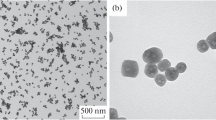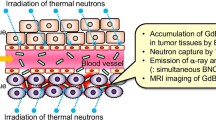Abstract
So far, reports in the literature indicate a superior effectiveness of anticancer treatments using drug liposome-encapsulated. In this work, the influence of cisplatin associated with lipid vesicles (liposomes) is studied. Possible induced changes in the elemental composition, distribution, and concentration inside F98 glioma cells are investigated by synchrotron X-ray fluorescence (SXRF) and particle-induced X-ray emission (PIXE), combined with backscattering spectrometry (BS). SXRF at nanometer spatial resolution provides information on the two-dimension variation of elements inside the cells, while PIXE and BS allow the determination of the elemental concentration at μg g−1 level. In comparison with dead cells, the elemental analysis shows that both platinum and zinc contents decrease in surviving samples. Moreover, higher levels of calcium and lower levels of potassium are revealed in dead cells, especially in those treated with liposomal cisplatin. These findings would mean that liposome-treated cells died mainly by apoptosis. Although further analyses are still necessary, the results presented in this work suggest that the lipid vesicles could provide, thus, a methodology for an effective platinum administration.






Similar content being viewed by others
References
Kelland L (2007) The resurgence of platinum-based cancer chemotherapy. Nat Rev Cancer 7:573–584
Jamieson ER, Lippard SJ (1999) Structure, recognition, and processing of cisplatin-DNA adducts. Chem Rev 99:2467–2498
Kartalou M, Essigmann JM (2001) Recognition of cisplatin adducts by cellular proteins. Mutat Res 478:1–21
Wang D, Lippard SJ (2005) Cellular processing of platinum anticancer drugs. Nature 4:307–320
Hartman T, Lipp HP (2003) Toxicity of platinum compounds. Expert Opin Pharmacother 4:889–901
Stölting DP, Borrmann M, Koch M, Wiese M, Royer HD, Bendas G (2014) How liposomal cisplatin overcomes chemoresistance in ovarian tumor cells. Anticancer Res 1:525–30
Iwamoto T (2013) Clinical application of drug delivery systems in cancer chemotherapy: review of the efficacy and side effects of approved drugs challenges of drug delivery systems. Biol Pharm Bull 36:715–718
Hamilton A, Biganzoli L, Coleman R, Mauria L, Henneber P, Awada A, Nooji M, Beex L, Piccart M, Van Hoorebeeck I, Bruning P, De Valeriola D (2002) EORTC 10968: a phase I clinical and pharmacokinetic study of polyethylene glycol liposomal doxorubicin (Caelyx®, Doxil®) at a 6-week interval in patients with metastatic breast cancer. Annal Oncol 13:910–918
Chang DK, Li PC, Lu RM, Jane WN, Wu HC (2013) Peptide-mediated liposomal Doxorubicine enhances drug delivery efficiency and therapeutic efficacy in animal models. PLOS 8:1–12
Qin Z, Joseph A, Caruso LB, Matusche A, Beckerf JS (2011) Trace metal imaging with high spatial resolution: applications in biomedicine. Metallomics 3:28–37
Hummer AA, Rompel A (2013) The use of X-ray absorption and synchrotron based micro-X-ray fluorescence spectroscopy to investigate anti-cancer metal compounds in vivo and in vitro. Metallomics 5:597–614
Fahrni CJ (2007) Biological applications of X-ray fluorescence microscopy: exploring the subcellular topography and speciation of transition metals. Curr Opin Chem Biol 11:121–127
Ortega R, Devès G, Carmona A (2009) Bio-metals imaging and speciation in cells using proton and synchrotron radiation X-ray microspectroscopy. J R Soc Interface 6:S649–S658
Hall MD, Dillon CT, Zhang M, Beale P, Cai Z, Lai B, Stampfl AP, Hambley TW (2003) The cellular distribution and oxidation state of platinum(ll) and platinum(lV) antitumour complexes in cancer cells. J Biol Inorg Chem 8:776–737
Hall MD, Alderden RA, Zhang M, Beale PJ, Cai Z, Lai B, Stampfl AP, Hambley TW (2006) The fate of platinum(II) and platinum(IV) anti-cancer agents in cancer cells and tumours. J Struct Biol 1:38–44
Chen KG, Valencia JC, Lai B, Zhang G, Paterson JK, Rouzaud F, Berens W, Wincovitch SM, Garfield SH, Leapman RD, Hearing VJ, Gottesman MM (2006) Melanosomal sequestration of cytotoxic drugs contributes to the intractability of malignant melanomas. PNAS 103:9903–9907
Shimura M, Saito A, Matsuyama S, Sakuma T, Terui Y, Ueno K, Yumoto H, Yamauchi K, Yamamura K, Mimura H, Sano Y, Yabashi M, Tamasaku K, Nishio K, Nishino Y, Endo K, Hatake K, Mori Y, Ishizaka Y, Ishikawa T (2005) Element array by scanning X-ray fluorescence microscopy after cis-diamminedichloro-platinum(II) treatment. Cancer Res 65:4998–5002
Roudeau S, Carmona A, Perrin L, Ortega R (2014) Correlative organelle fluorescence microscopy and synchrotron X-ray chemical element imaging in single cells. Anal Bioanal Res doi:10.1007/s00216-014-8004-4
Zhang JZ, Bryce NS, Lanzirotti A, Chen CKJ, Paterson D, de Jonge MD, Howard DL, Hambley TW (2012) Getting to the core of platinum drug bio-distributions: the penetration of anti-cancer platinum complexes into spheroid tumour models. Metallomics 4:1209–1217
Matsuyama S, Shimura M, Fujii M, Maeshima K, Yumoto H, Mimura H, Sano Y, Yabashi M, Nishino Y, Tamasaku K, Ishizaka Y, Ishikawa T, Yamauchi K (2010) Elemental mapping of frozen-hydrated cells with cryo-scanning X-ray fluorescence microscopy. X-Ray Spectrom 39:260–266
Barth RF (1998) Rat brain tumor models in experimental neuro-oncology: the 9 L, C6, T9, F98, RG2 (D74), RT-2 and CNS-1 gliomas. J Neurooncol 36:91–102
Carmona A, Devès G, Ortega R (2008) Quantitative micro-analysis of metal ions in subcellular compartments of cultured dopaminergic cells by combination of three ion beam techniques. Anal Bioanal Chem 390:1585–1594
Campbell JL, Boyd NI, Gras N, Bonnick P, Maxwell JA (2010) Nucl Instrum Meth B 268:3356–3363
Mayer M. SIMNRA User’s Guide. Report IPP 9/113, (1997) Max-Planck-Institut für Plasmaphysik, Garching, Germany
Martinez-Criado G, Tucoulou R, Cloetens P, Bleuet P, Bohic S, Cauzid J, Kieffer I, Kosior E, Labouré S, Petitgirard S, Rack A, Sans JA, Segura-Ruiz J, Suhonen H, Susini J, Vilanova J (2012) Status of the hard X-ray microprobe beamline ID22 of the European Synchrotron Radiation Facility. J Synchrotron Radiat 19:10–18
Solé VA, Papillon E, Cotte M, Walter P, Susini J (2007) A multiplatform code for the analysis of energy-dispersive energy X-ray fluorescence spectra. Spectrochim Acta Part B 62:63–68
Verheij M, Bartelink H (2000) Radiation-induced apoptosis. Cell Tissue Res 301:133–142
Serrano FA, Matsuo AL, Monteforte PT, Bechara A, Smaili SS, Santana DP, Rodrigues T, Pereira FV, Silva LS, Machado J Jr, Santos EL, Pesquero JB, Martins RM, Travassos LR, Caires ACF, Rodrigues EG (2011) A cyclopalladated complex interacts with mitochondrial membrane thiol-groups and induces the apoptotic intrinsec pathway in murine and cisplatin-resistant human tumor cells. BMC Cancer 11:296–311
Zong WX, Thompson CB (2006) Necrotic death as a cell fate. Genes Dev 20:1–15
Sharma S, Rais A, Sandhu R, Nel W, Ebadi M (2013) Clinical significance of metallothioneins in cell therapy and nanomedicine. Int J Nanomedicine 8:1477–1488
Ortega R, Moretto P, Fajac A, Bénard J, Llabador Y, Simonoff M (1996) Quantitative mapping of platinum and essential trace metal in cisplatin resistant and sensitive human ovarian adenocarcinoma cells. Cell Mol Biol 42:77–88
Thirumoorthy N, Manisenthil Kumar KT, Shyam Sundar A, Panayappan L, Chatterjee M (2007) Metallothionein: an overview. World J Gastroenterol 13:993–996
Ortega R, Cloetens P, Deves G, Carmona A, Bohic S (2007) Iron storage within dopamine neurovesicles revealed by chemical nano-imaging. PloS ONE 2:e925
Acknowledgments
The authors would like to thank at the ESRF, SPIRIT, and AIFIRA for their financial and technical support.
Author information
Authors and Affiliations
Corresponding author
Rights and permissions
About this article
Cite this article
Gil, S., Carmona, A., Martínez-Criado, G. et al. Analysis of Platinum and Trace Metals in Treated Glioma Rat Cells by X-Ray Fluorescence Emission. Biol Trace Elem Res 163, 177–183 (2015). https://doi.org/10.1007/s12011-014-0097-2
Received:
Accepted:
Published:
Issue Date:
DOI: https://doi.org/10.1007/s12011-014-0097-2




